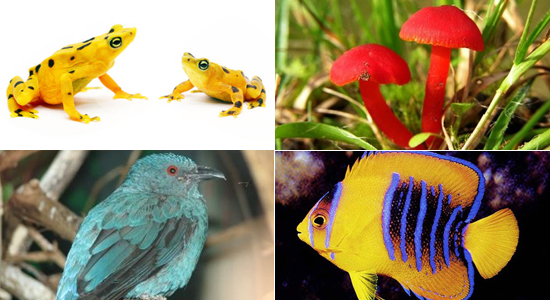
When biologist E.O. Wilson won the TED Prize in 2007, he wished that we all “work together to help create the key tool that we need to inspire preservation of Earth’s biodiversity.” With that, the Encyclopedia of Life began the outrageous task of cataloguing all of the Earth’s known species.
Cynthia Parr spoke at TED2012 to give updates on the Encyclopedia, which now has well over a million entries — 1,112,395 to be exact. And the Encyclopedia has found a new way for the average Joe or Josephine to get to know new species — with beautifully curated Pinterest pages. Because we love their color-coded albums, below find just a few of the amazing creatures that be found in the collections “Ruby Red,” “Mellow Yellow” and “Life is Blue.”
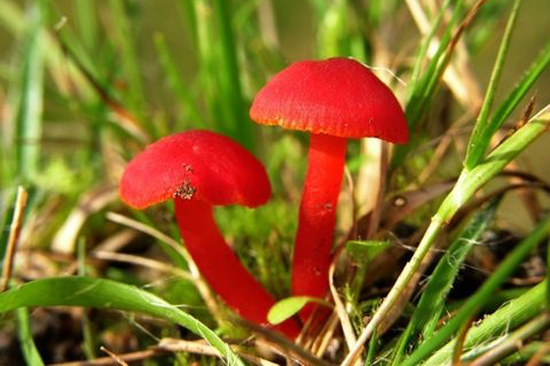
Scarlet Hood, or Hygrocybe coccinea, are mushrooms that grow to just two inches and can be found at the base of redwood trees. These little guys are edible, but they may not be the yummiest.
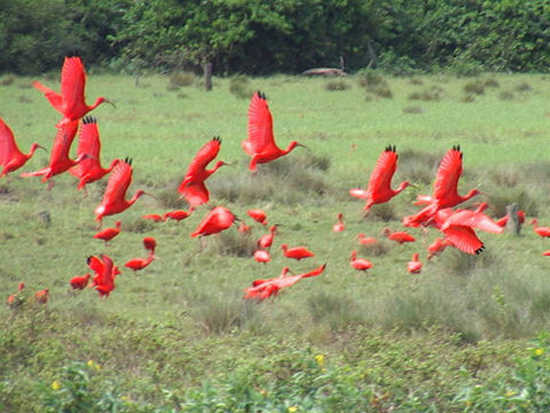
From the Scarlet Hood to the Scarlet Ibis, this bird, Eudocimus ruber, is a nomadic South American species. The Scarlet Ibis can live to be 20-years-old.
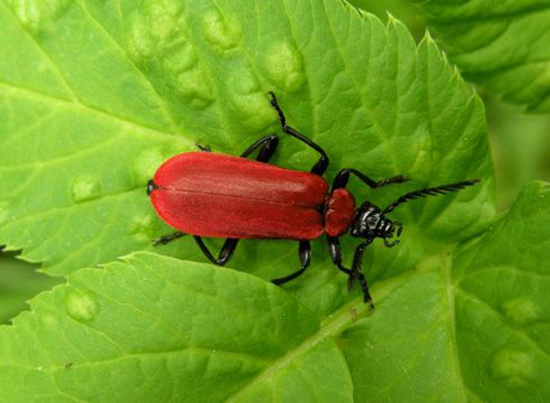
The Cardinal Beetle, or Pyrochroa coccinea, uses its red wings as a warning to show predators its toxicity. Look for it on flowers at the edge of the woods.
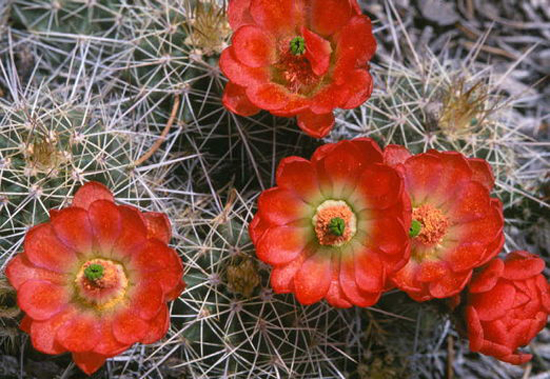
Catch this flowering cactus, the Claret-cup Cactus (Echinocereus coccineus) when it blooms for two to three days during the Spring.
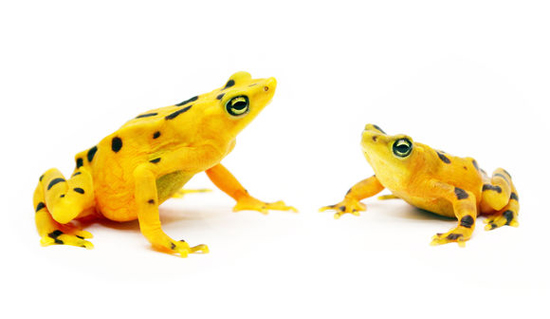 Panamanian golden frogs, Atelopus zeteki, have green eyes, yellow-orange backs, and black spots. This colorful amphibian is critically endangered, with over 80% of its population disappearing in the past 10 years.
Panamanian golden frogs, Atelopus zeteki, have green eyes, yellow-orange backs, and black spots. This colorful amphibian is critically endangered, with over 80% of its population disappearing in the past 10 years.
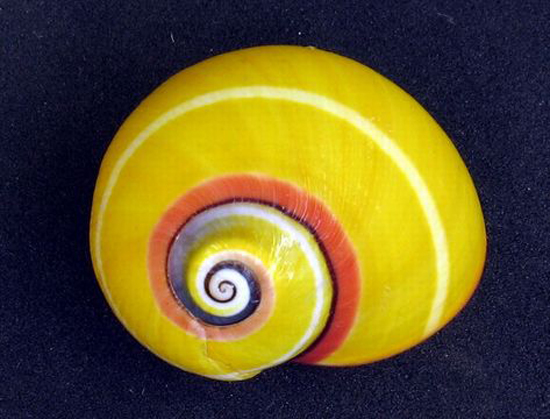
The Polymita picta, also known as the Cuban Land Snail, attracts mates using love darts, a kind of small arrow produced by the snail itself in the seduction process.

Look for this sunflower in Illinois, where it was introduced by American Indians prior to European settlement. Helianthus annuus, meaning annual sunflower from the Latin, is a popular pollinating site for honeybees.
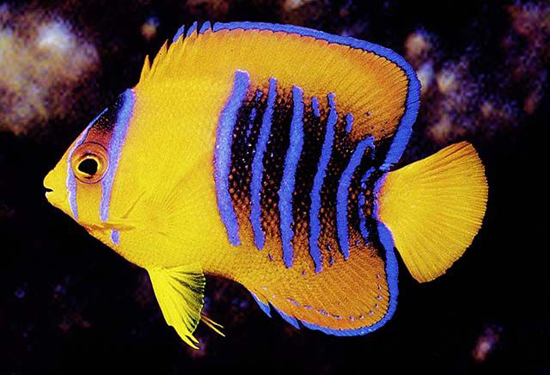
Holacanthus clarionensis, better known as the angelfish, is endemic to the Eastern Pacific with populations originating from near the Baja California Peninsula. Measuring on average 20 centimeters in length, angelfish stretch about the same distance as a fork.
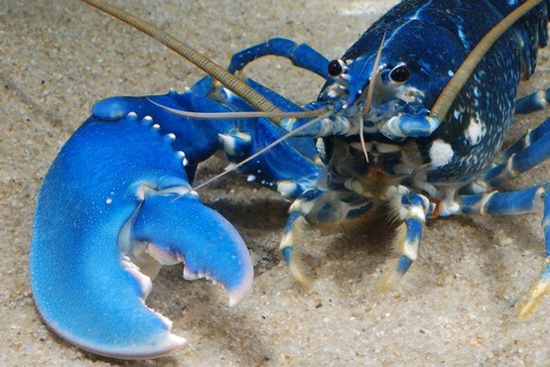
The Common Lobster is a scavenger who uses its claws to eat. The Homarus gammarus finds its home in mud burrows and can live up to 15 years.
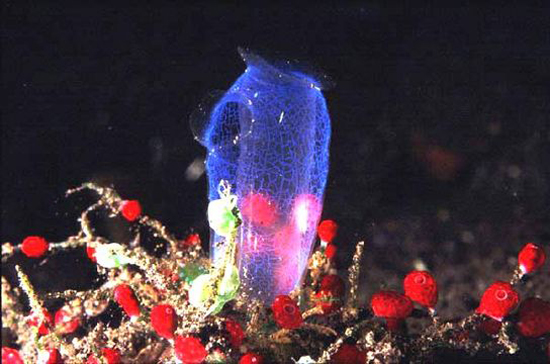
This sea ascidian grows in Bali, Indonesia, and goes by the formal name Rhopalaea morph translucent blue.

Find this Fairy Bluebird, also known as the Irena puella, in the Himalayan foothills. Its diet consists of fruit, nectar and a few bugs.
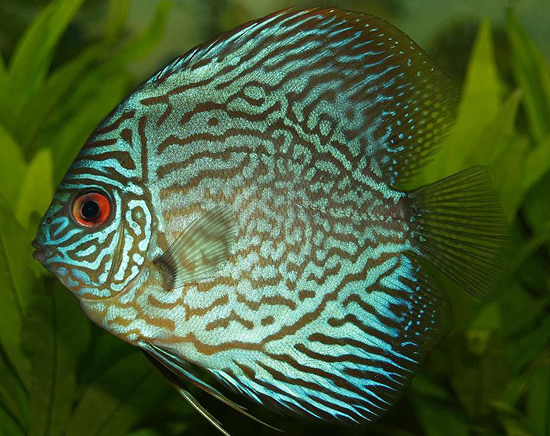
This native freshwater Amazonian fish is known as the Discus fish (Symphysodon aequifasciata). Both parents of the Discus larvae care for their young.
.
This blog post was a tag-team effort between Shirin Samimi-Moore, who curated the red and blue collections, and Liz Jacobs, who created the yellow collection.
Photo credits for red species:
- Hygrocybe coccinea: JC Schou
- Eudocimus ruber: Frank Kramer
- Pyrochroa coccinea: Stanislav Krejcik
- Echinocereus coccineus: Robert Sivinski
Photo credits for yellow species:
- Atelopus zeteki: Brian Gratwicke
- Polymita picta: Michael Kesl
- Helianths annus: 3266zauber
- Holacanthus clarionensis: Ross Robertson
Photo credits for blue species:
- Homarus gammarus: N Sloth
- Rhopalaea morph translucent blue: Arjan Gittenberger
- Irena puella: Public Domain
- Symphysodon aequifasciata: Patrick Farrelly
Comments (3)